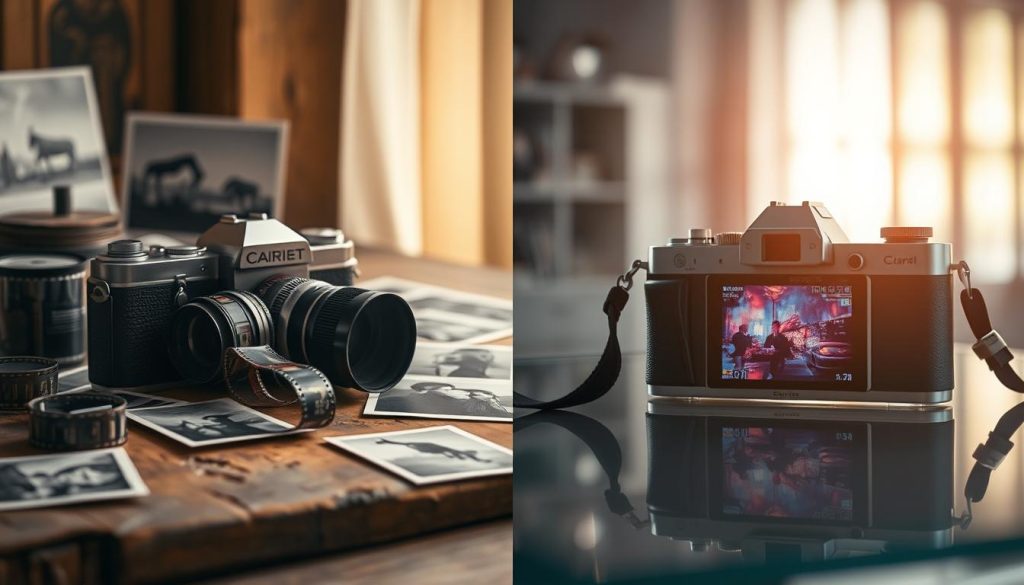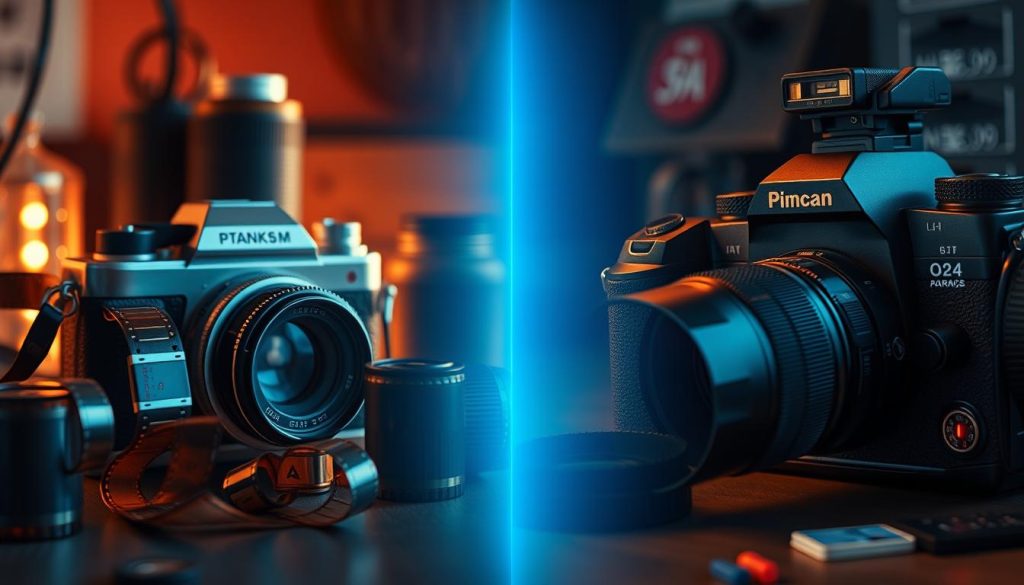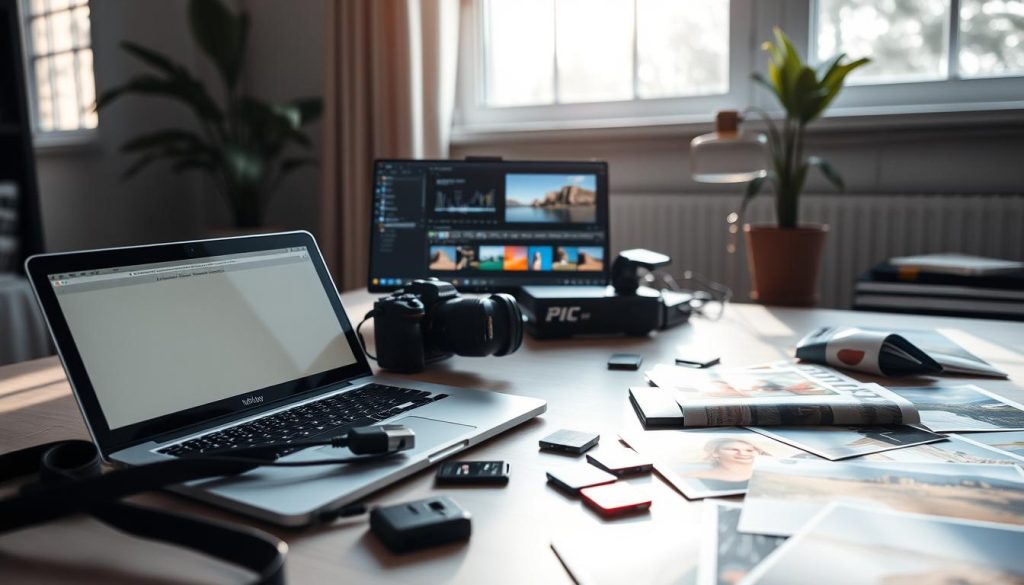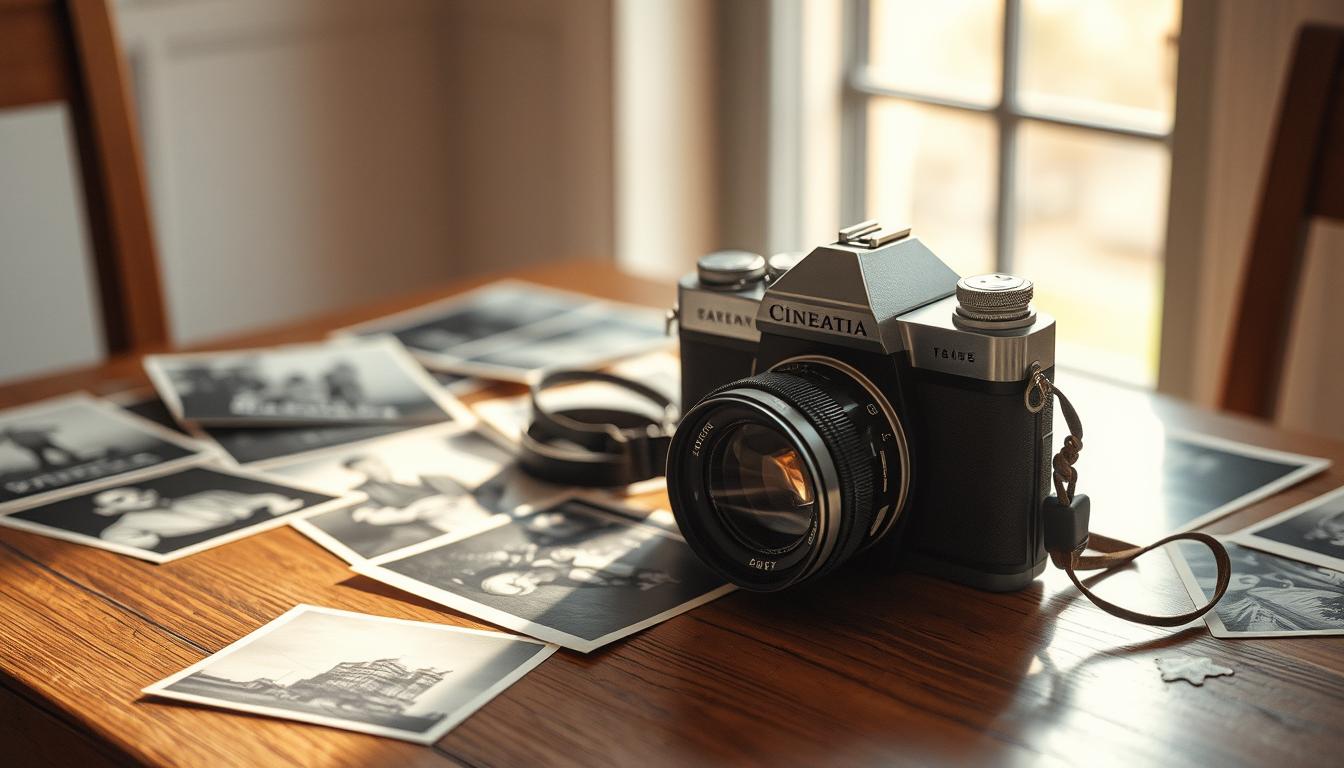I love photography and how it has changed over time. From old film cameras to today’s digital ones, it’s amazing. We’ll look at the big differences between classic and digital photography. We’ll see what makes each special and what they can do.
Photography has changed a lot in recent years. Classic photography is still loved for its feel and art. But digital photography has changed how we take, edit, and share photos. Let’s learn more about these two ways of taking pictures.
The Evolution of Photography: From Analog to Digital
The history of photography is a journey through time. It goes from the early days of film to the digital age. Knowing this history helps us see the differences between old and new photography.
The Dawn of Analog Photography
Analog photography, or film, started in the 1800s. Pioneers like Joseph Nicéphore Niépce and Louis Daguerre began using light-sensitive chemicals. They made the first photos.
Cameras like the Leica and Nikon F became famous. They were used by both pros and hobbyists.
The Digital Revolution
Digital photography came in the late 1900s. It changed everything with digital sensors and software. Now, photographers can control their work like never before.
Digital cameras, from the Kodak DCS 100 to today’s models, changed how we take and share photos. This shift has changed how we see and use pictures.
The move from film to digital has been exciting. It shows how photography has grown. By knowing its history, we can see the beauty of both old and new photography.
Classic vs Digital Photography: Understanding the Differences

I love photography and find the differences between classic and digital fascinating. Each has its own way of capturing images and creating art. These differences have shaped photography into what it is today.
Image Capture
Classic photography uses film. Light-sensitive chemicals create a hidden image that’s later developed. Digital photography uses sensors to capture images instantly.
Image Quality
Classic film is known for its deep colors and unique look. Digital cameras have improved a lot. They offer high resolution, better low-light shots, and more colors.
Workflow and Editing
Classic photography is more hands-on. You have to develop film and print photos. Digital photography is easier. You can edit and share photos right away.
| Criteria | Classic Photography | Digital Photography |
|---|---|---|
| Image Capture | Film-based, with chemical reactions | Electronic sensors, converting light to digital information |
| Image Quality | Rich tonality and dynamic range | High resolution, low-light performance, broader color range |
| Workflow and Editing | Hands-on, involving film development and darkroom manipulation | Streamlined, with digital tools and software for instant review and editing |
Choosing between classic and digital photography depends on what you like. Each offers unique ways to see the world. It’s all about what you want to create.
The Timeless Charm of Classic Photography
In today’s world, where things happen fast and editing is easy, classic photography still wins hearts. The skill of darkroom work shows the lasting charm of film photography. It takes patience and hard work to master.
The Art of Darkroom Mastery
Film photography is a special journey that lets photographers dive deep into their craft. They load film, develop, and print each photo with care. Every step shows their skill and commitment.
Classic photography offers more than just tech skills. It connects you deeply with your subject and makes you think more about your shots. Using old cameras and darkrooms can be tough but very rewarding.
For many, working in the darkroom is calming and changes them. It gives them control, understanding, and the joy of making real photos. This timeless way of taking pictures still draws in those who love the darkroom.
| Classic Photography Benefits | Analog Photography Advantages |
|---|---|
| Deeper connection to the subject | More intentional approach to composition |
| Heightened sense of control | Greater appreciation for the art form |
| Deeper understanding of the medium | Satisfaction of creating a physical, tangible image |
Classic vs Digital Photography: Exploring the Divide

I love photography and always wonder about the debate between classic and digital. The medium you choose can really change how you create and enjoy photos. Let’s look at what photographers and fans think about this.
People have different likes when it comes to photography mediums. Some love the old-school feel of film, while others prefer the ease of digital cameras. This choice often shows what kind of art they like to make.
Photography styles also shape this debate. Classic photos are often made with more thought, each shot carefully planned. Digital photos, on the other hand, let you try new things and take lots of pictures to edit later.
The debate really comes down to how you express yourself through photos. Some think film’s limits help them connect more with their subjects. Others see digital as a way to explore their creativity freely.
The Divide in Action
Let’s see how this debate plays out in real life. John, a landscape photographer, uses film cameras for his outdoor shots. He loves the slow, thoughtful process of taking each photo. The surprise of how the film turns out adds to the excitement.
Sarah, a portrait photographer, likes digital cameras for their quick feedback and editing tools. She enjoys trying different angles and editing to get the look she wants. Digital’s fast pace fits her style.
John and Sarah are both great at what they do. But their choice of camera shows their different ways of seeing the world through photos.
| Classic Photography | Digital Photography |
|---|---|
| Deliberate, contemplative approach | Spontaneous, experimental approach |
| Unique character and unpredictability | Instant feedback and post-processing |
| Requires mastery of darkroom techniques | Versatility and convenience |
The debate between classic and digital photography keeps growing. Both have their fans and reasons to choose them. It all comes down to what you like, what you want to create, and how you want to experience photography.
The Convenience of Digital Photography

Digital photography has changed how we take, keep, and share our memories. It brings many benefits, like instant results and easy editing. These changes have made photography easier and more fun.
Instant Gratification and Editing Capabilities
Seeing your photos right away is a big plus of digital photography. No more waiting for film or prints. You can check and change your shots instantly.
Also, digital photography lets you edit your photos like pros. You can use apps and software to change colors, brightness, and more. This makes it easy for anyone to get creative with their photos.
Sharing photos is also super easy with digital photography. You can post them online quickly. This helps you connect with others and keep memories alive.
| Advantages of Digital Photography | Benefits |
|---|---|
| Instant Gratification | Review and refine shots instantly, no waiting for film development |
| Digital Photo Editing | Enhance images, adjust settings, and apply creative effects |
| Instant Sharing | Upload and share photos easily on social media and cloud storage |
Digital photography has made taking, editing, and sharing photos easy. It lets us be creative and keep our memories alive in new ways.
Finding the Right Balance: Embracing Both Worlds
Exploring classic and digital photography shows their power when combined. A hybrid approach lets photographers use the best of both. This way, they can express their art more fully and creatively.
Using both classic and digital photography makes the art richer. Classic photography feels real and connects us to the craft. Digital photography is quick and lets us edit endlessly.
Photographers can use both to make their work better. They can mix classic and digital techniques. This way, their photos look timeless yet use today’s digital tools.
This mix of old and new opens up new ways to create. Photographers can try new things, blending old and new. This lets them express their art in new and exciting ways.
Finding the right mix is key. Photographers need to use both classic and digital wisely. This way, they can make photos that are both traditional and new, inspiring everyone who sees them.
The Future of Photography: A Symbiotic Relationship
Looking back, I’m thrilled to see how photography has grown. The mix of old (analog) and new (digital) photography is exciting. Each style will help the other grow, making photography even better.
Photography’s future is about mixing old ways with new tech. Fans of film and darkrooms will find joy in digital’s ease. Digital photographers can add a touch of classic charm to their work. This mix will make photos more amazing than ever.
New tech like better sensors and editing tools will change what we can do. But, the heart of photography is the artist’s vision and feeling. The future will show how digital and analog work together, making beautiful photos.

